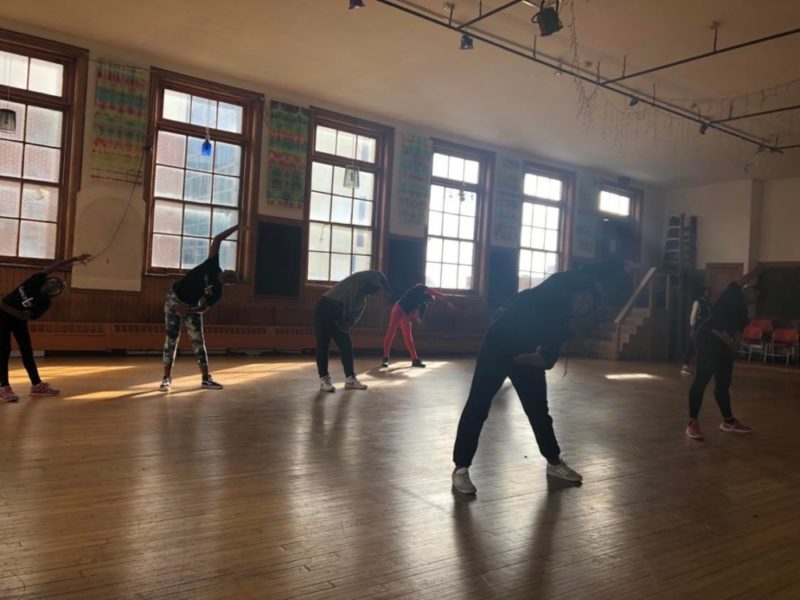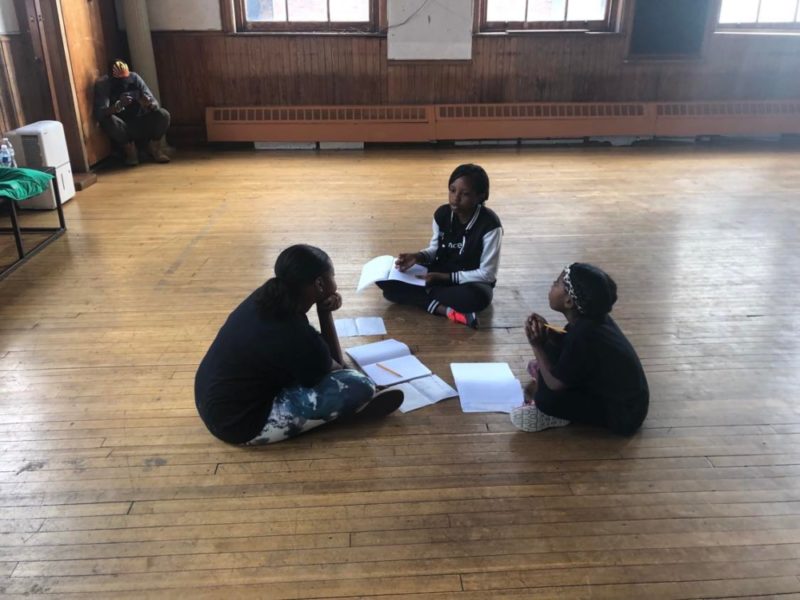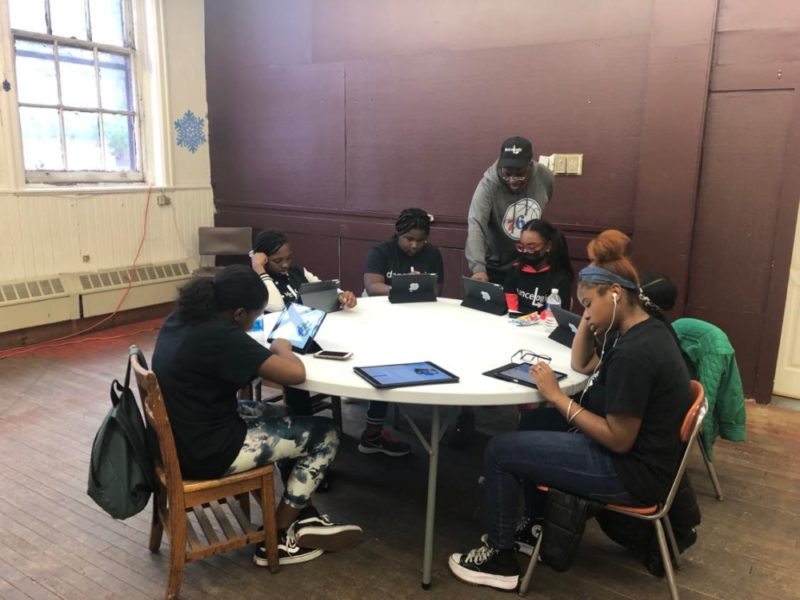The West Park Cultural Center is exercising adolescent girls’ minds and bodies with its danceLogic class on Saturday afternoons. The program started in 2018 through a collaboration with longtime technologist Franklyn Athias.
Athias, the recently retired SVP of network and communications engineering at Comcast Cable, and Devon Gooden, a computer programmer at RandStad consulting firm, are the current coding instructors, while Cameron Bridgers and Natasha S. Truitt are dancers and dance instructors for the class.
The combination of coding and dance aims to bridge gaps in the students’ interests, said Jerry Puryear, West Park Cultural Center’s program manager. For instance, if a student is interested in dance but not coding, the dance class gets them in the door, and then they get exposure to coding.
“How do we make coding relevant, and how do we highlight that through dance?” Puryear told Technical.ly.
Part of the program’s mission is to boost STEM skills and awareness of future opportunities in the field. This reporter visited the class on a brisk fall afternoon in November to see exactly what these students are learning.
The program started at noon, with some quiet time to journal. Bridgers said every week, the students get a prompt to reflect on their dancing and themselves.

The hour-and-20-minute dance class started with a group warmup, then the students rehearsed dances they choreographed in a previous class and performed them for the group. They split into two groups to each choreograph a new dance for the other group, writing out their choreography in code language to signal when to move left, right, front and back. At the end of the session, both groups performed.
After a short break, the students headed downstairs for an hourlong coding class, where their learning focused on Apple’s programming language, Swift. They used iPads to work on different chapters in Swift’s playground program, which has the player use basic commands, for loops, and if statements to make a character move around the video game world to collect gems.
“The kids can use basic commands and move a character forward, backward, to collect gems and toggle switches,” Gooden said, “but it actually teaches them programming because the actual programming code and commands is what they click on to move the character around the different environments.”
The coding and dance instructors meet prior to the semester starting and work together to ensure that the students are doing well in both subjects.
Iliana, 10, is in her first year participating in danceLogic. She told Technical.ly she’s taken dance class before, but had never tried coding. She likes the two subjects equally, “because when you dance, it’s fun, because you could do it with partners, and coding is like a video game.” Meanwhile, Kayden, 10, said she likes the dance part of the program better because she prefers to be up and moving, rather than sitting and looking at an iPad.
This dual program helps the students think logically and creatively, as well as helps them understand the technology they use in their everyday lives, Gooden said. This exposure opens more doors for students to become interested in math and coding, possibly leading to a job in those fields.

The connection between this unlikely pairing is that dance requires physical choreography while coding uses logical choreography.
“I think them learning to dance, and then learning to code, is a really great way to show logic to what was going on. And they’re both beautiful,” Gooden said. “Their choreography is spot on. Math and programming, they’re precise. Your coding has to be spot on in order for the character to move to the right location and do what they’re instructed to do.”
The coding instructor said he would love for every student to go on to become a computer programmer, but in the case that doesn’t happen, he still wants every student to experience another way of thinking. The “logical” thinking they learn in a coding class could help them problem solve later in life: “By the end of the semester, you will see that they get better and better,” Gooden said. “danceLogic with coding is really, really awesome to expose them to a different way of thinking.”
Rhaiden, 11, has been participating in danceLogic for about two years. She told Technical.ly she had experience coding before taking the class, and part of her exposure comes from her dad being a computer teacher. From this program, she’s learned that coding connects to all technology that people use on a day-to-day basis. She wanted to be a math teacher when she grew up, but isn’t sure about that anymore. Regardless, her experience helping other girls in the class reinforced her desire to go into a field that helps people.
Gooden has seen previous students go on to learn more coding skills and even return to help instruct the class.
“One of the biggest issues is not being exposed” to STEM as a potential future career, he said. At danceLogic, “underprivileged children get exposed to another way of not only making money later on in life, but just get exposed to a different environment, that they can actually sit down and write a game rather than just play a game.”

The class is officially open to girls aged 10 to 16, but Puryear said they like to remain flexible with age and are open to girls a little younger and a little older, too.
The fall semester of the program started in October. Applications are currently open again for the spring semester starting in January. At the end of the program in June, the students will have an opportunity to perform at the West Park Arts Fest. The fee for the semester, which runs January through June, is $75, but there is an option to request a scholarship on the application. Puryear said the org is willing to work with families to make the class more affordable and accessible to them.
Puryear’s goal for this program is for the students to feel empowered and confident.
“We can create this safe space in this unsafe world, and we can take these ladies and give them a platform and empower them by giving them knowledge of something that’s valuable in this world,” he said. “They can just be secure in themselves and have someone feed into them that believes in them.”
That includes believing in themselves, too.
Kasey, 10, had never taken a dance class or a coding class before, but signed up because she loved to dance at home. She said she would definitely consider continuing both subjects in the future.
“I’ve learned that it’s not about what you think you’re good at. It’s about what you know you’re good at,” she said. “If you have one thing going on, and you know the other thing is going to be harder, just try it and just believe in yourself.”







